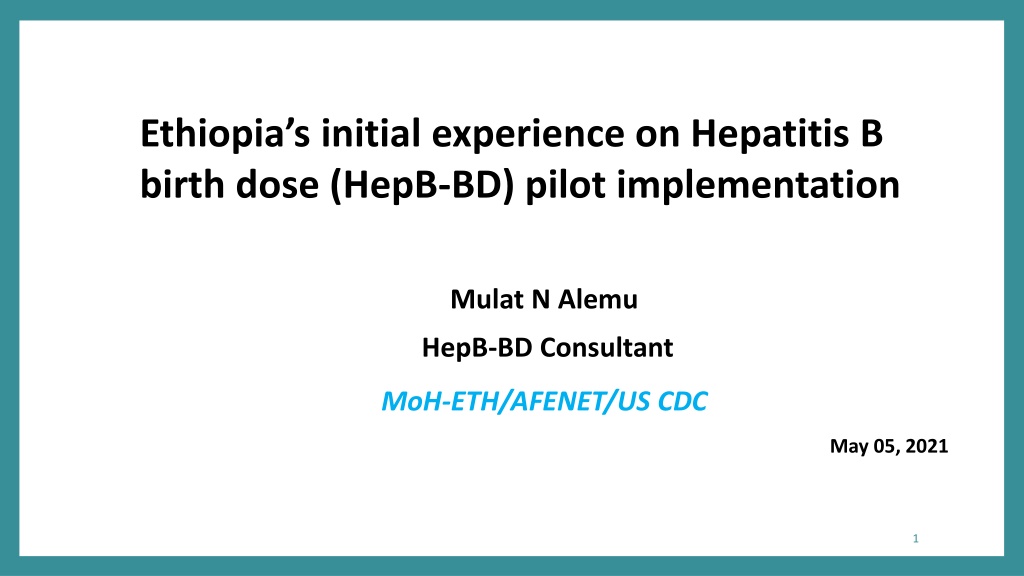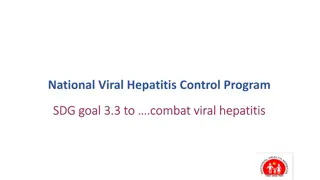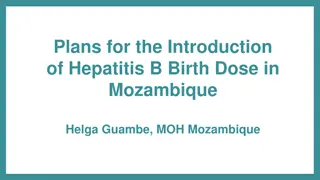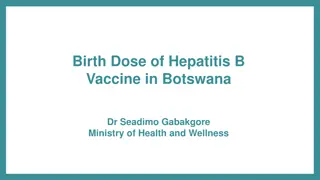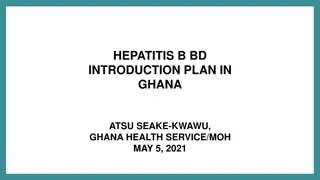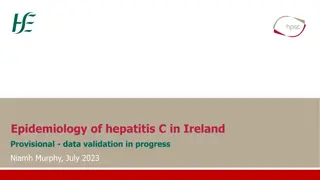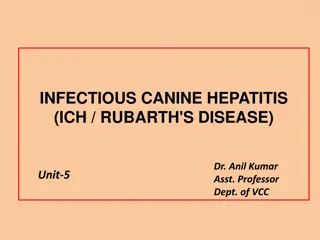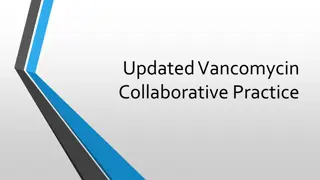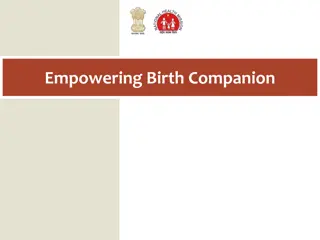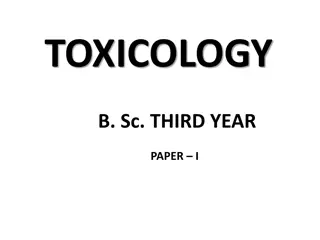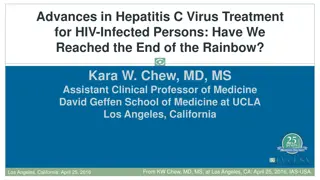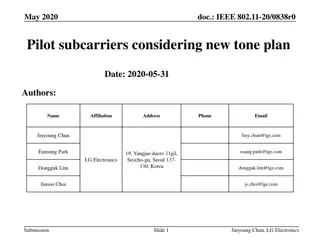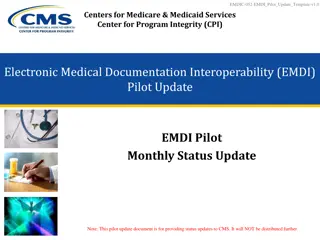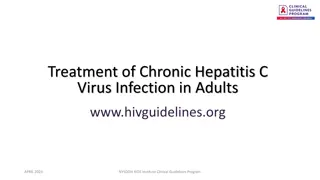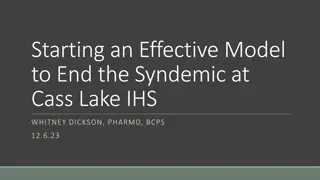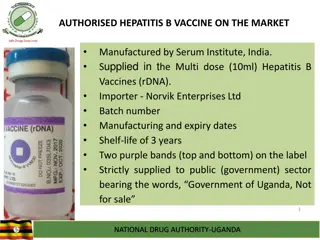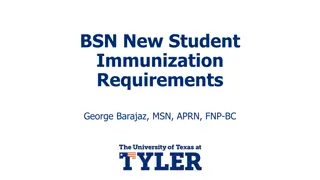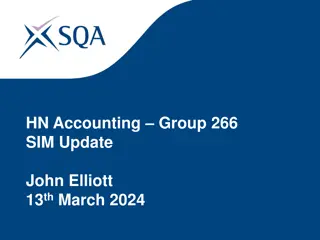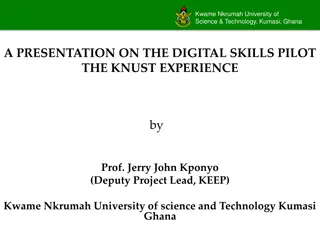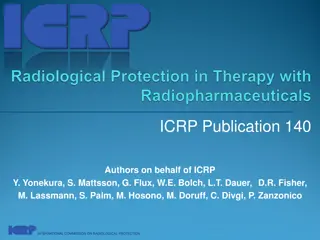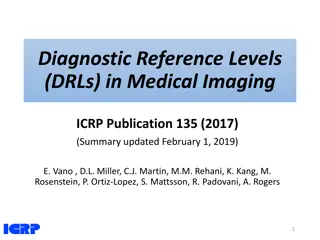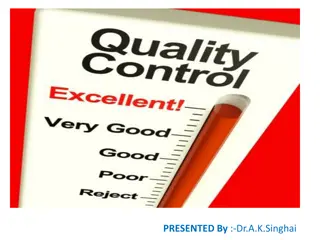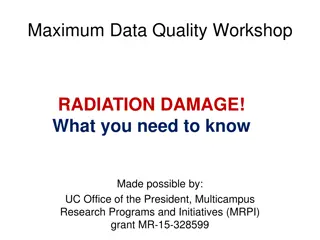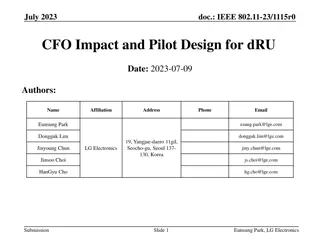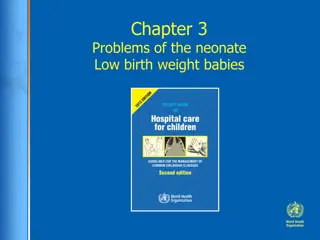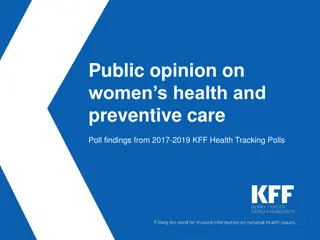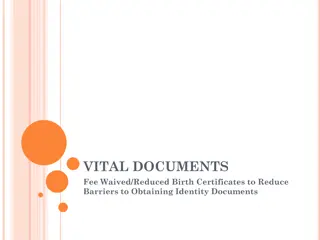Ethiopia's Initial Experience on Hepatitis B Birth Dose Pilot Implementation
Ethiopia's initial experience on Hepatitis B birth dose (HepB-BD) pilot implementation includes background statistics, HBsAg prevalence, hepatitis B vaccination coverage, distribution of HBV infection, existing guidelines/strategies, and activities prior to the start of HepB-BD piloting.
Download Presentation

Please find below an Image/Link to download the presentation.
The content on the website is provided AS IS for your information and personal use only. It may not be sold, licensed, or shared on other websites without obtaining consent from the author. Download presentation by click this link. If you encounter any issues during the download, it is possible that the publisher has removed the file from their server.
E N D
Presentation Transcript
Ethiopias initial experience on Hepatitis B birth dose (HepB-BD) pilot implementation Mulat N Alemu HepB-BD Consultant MoH-ETH/AFENET/US CDC May 05, 2021 1
Background: Country statistics Total population (2020/21) => 102,850,793 Estimated # of live births =>3,455,787 (3.36% of total pop.) Estimated # of surviving infants => 3,250,085 (3.16% of total pop.) Proportion in skilled births National level =>50% (ranges from 26% in Somali region to 96% in Addis Ababa City) 2
Background: HBsAg prevalence Estimated prevalence of HBsAg in the general population (2016) 7.4% (95%CI: 6.5 8.4%) Estimated prevalence of HBsAg among pregnant women (2018) 4.7% (95%CI: 4.0 5.4%) Estimated prevalence of HBsAg among children <5 years (2019) 4.4% [95% CI: 2.8 6.6%] .Hawassa City Note: Ethiopia is considered to have intermediate to high HBV prevalence 3
Background: Hepatitis B Vaccination coverage in Ethiopia No HepB birth dose (HepB-BD) vaccination service so far in Ethiopia Infant HepB vaccine added to EPI series in 2007 Current three doses of pentavalent schedule is at 6, 10 & 14 weeks of age. Coverage level (EDHS 2019) indicated: DPT-HepB-Hib 1 => 76% DPT-HepB-Hib 3 => 61% BCG => 73% 4
Background: Distribution of HBV infection & penta3 coverage Fig: Penta3 coverage by region according to the mini-DHS 2019 findings Fig: Regional variation of weighted HBsAg prevalence stratified by rural-urban setting. National prev. was 9.4% 5
Existing guidelines/strategies Policy/Interventions on PMTCT of HBV Ethiopia has national strategic plan and guideline for prevention and control of viral hepatitis (2016-2020). The documents are now under revision for viral hepatitis prevention and control. HBsAg screening & treatment of pregnant women Screening for HBV infection is done using HBV serological testing for high risk groups which include pregnant women, commercial sex workers and prisoners. Treatment guideline for infected pregnant women is available. Note: Actual practice has many drawbacks but needs further assessment! 6
Activities done prior to the start of HepB-BD piloting In 2016-2020 cMYP: Introduction of HepB-BD by 2018 On August 17, 2017: E-NITAG initiated discussion on national HepB-BD (following a request from EPI-MoH) Research Advisory Counsel (RAC) generated an evidence on economic evaluation (incremental cost-effectiveness ratio ICER - USD 110 per DALY averted) of introduction of HepB-BD to the immunization program in Ethiopia. Published (https://resource- allocation.biomedcentral.com) EPI-MoH and stakeholders developed a policy brief & concept note on HepB-BD piloting in Ethiopia. After then, detail proposal developed & shared, and budget mobilization done. Pilot sites selected, the sites informed, preparations including capacity building and social mobilization activities done. Now the pilot implementation is underway. 7
Objectives of pilot introduction To identify & address programmatic & logistical challenges/barriers during HepB-BD vaccination To test the strategy and draw lessons learnt & document best practices to inform full scale nationwide universal HepB-BD introduction To determine HepB-BD vaccination acceptance(HCWs, caretakers ) To estimate HepB-BD vaccination coverage (both timely & late coverages) To determine impact/effectiveness of HepB-BD in averting hepatitis infection rate. To determine cost & cost-effectiveness of the pilot introduction and get substantial insight for the full scale nationwide universal HepB-BD introduction 8
Methods/designs of the pilot introduction Design - evaluate the following approaches: Redesign a new vaccine delivery point to provide vaccines given at birth in the delivery/PNC units Task sharing/shifting (management involvement, awareness creation, job aid, scope of work) Vaccine Logistics (vaccines, syringes, safety box, registration book, refrigerator, vaccine card, etc.) Training (staffs from delivery, PNC/NICU, Vaccination rooms) Linkage and continuity of vaccination services Improve integration and coordination among maternal, child and vaccination services/programs Setting Urban, Agrarian and pastoralist Hospital, Health Center, Health Post & outreach/mobile sites Others : Pregnancy/birth notification, increasing institutional delivery and reaching home births to attain and sustain high HepB-BD vaccination coverage. 9
Selection criteria and selected regions Four regions (one urban, one pastoral and two agrarian) The scores assigned for the indicators were: Ante natal care (ANC) (20%) and Skilled birth attendant (SBA) (20%) Post natal care specially PNC within 2 days (20%) Sero-prevalence of HBsAg (40%) 10
Other relevant information for HepB-BD pilot introduction Recording/reporting tools, and training materials prepared and shared with focal persons of the pilot sites: oRegister, tally sheet and facility reporting form are now available at each HepB-BD vaccination service delivery points (vaccination, delivery, PNC/NICU) oReporting form is also now available at PHCU, Woreda, Zone and Region levels oTraining Materials/slides/ prepared & provided to all sites o[Introduction & burden of HBV, vaccination schedule & administration, vaccine attributes & storage, AEFI, Vaccination strategies, communication, and M & E] oIEC materials [fact sheet, brochure & poster} prepared & provided to all sites 11
Initial performance (data) from two districts (show case) Home delivery Facility delivery Month (2021) Facility delivery Home delivery Total Delivery Total vaccinated Timely HepB- BD Coverage Late HepB-BD Coverage Total HepB- BD Coverage vaccinated 24 hrs-14 days Region Zone Woreda LB vaccinated within 24 hrs vaccinated 24 hrs-14 days vaccinated within 24 hrs Jan (Month of start) 573 356 9 365 0 9 356 0 365 62.18% 1.57% 63.76% Goncha Siso Enese Amhara East Gojjam 573 438 10 448 0 10 448 0 458 78.25% 1.75% 80.00% Goncha Siso Enese Feb Amhara E-Gojjam 573 465 16 481 0 23 465 0 488 81.22% 4.02% 85.24% Goncha Siso Enese Mar Amhara E-Gojjam 6870* 903 26 929 - 33 913 - 946 13.29% 0.48% 13.77% Total (Goncha) Feb (Month of start) 375 531 0 531 0 0 219 3 222 58.40% 0.80% 59.20% Addis Ababa Akaki Kality Woreda 01 375 447 0 447 0 0 404 0 404 107.7% 0.0% 107.7% Addis Ababa Akaki Kality Woreda 01 Mar 4500** 978 0 978 0 0 623 3 626 13.8% 0.1% 13.9% Total (Woreda 01) * Total yearly target for Goncha ** total yearly target for Woreda 01 12
Challenges for the HepB-BD Introduction Place of birth: Low facility delivery or high home delivery Socio-cultural factors: Home deliveries (Practice of stay at home for 45 days) Additional Cost: Equipping, training staffs at delivery/PNC/NICU, etc. Time factor: Providing the service within 24 hours is an ideal recommendation to adhere. New strategy implemenation: Establishing/strengthening new vaccination service delivery points & providing the service within 24 hours of birth to all newborns regardless of place of birth is not an easy task. 13
Opportunities of HepB-BD introduction Getting focus to HepB elimination at national/global level (e.g. included in SDGs) Funding/TA support is available for this pilot implementation Planning to generate local data from this pilot implementation to inform the full scale nationwide universal HepB-BD introduction There is a promising possibility of getting additional funding/TA supports from stakeholders and partners for the full scale universal HepB-BD introduction 14
Next steps Effective use of technical working groups (TWGs) Revitalize the TWGs by engaging all relevant stakeholders and partners. The TWGs need to be on board across the pilot implementation and its documentation process. Documenting all those series of discussions and tabling all those series of discussion outputs to E-NITAG in time will be needed. Support, follow-up, monitor and evaluate the HepB-BD pilot implementation (12 months) Monitor the implementation, documentation & evaluation processes to come up with pertinent evidences on the strategy, impact on infection rate, cost/cost-effectives and related matters to determine and inform the possible national full scale up of universal HepB-BD introduction. Engage & collect best lessons and experiences from other LMI countries Engage E-NITAG to undertake a rigorous review of the evidences from the pilot implementation and others sources will be vital to draw an independent recommendations. Interagency coordinating committee (ICC) will discuss and make final decision on national full scale up of universal HepB-BD introduction Make resource mobilization & get ready to apply for Gavi support for the full scale up universal HepB-BD introduction in Ethiopia 15
Call for networking, collaboration and action! Networking & collaboration matters to translate the targets of HepB elimination into realities including ensuring high timely HepB-BD and the required consecutive 2-3 doses coverage in countries per the WHO recommendation. Ethiopia is open to collaborate, network and receive any supports for the full scale universal HepB-BD introduction as well as overall HepB prevention, control and elimination efforts. Let us join our sets of various resources to translate the national/global target s into reality for HepB elimination by 2030. Reduce Chronic HBV infection prevalence to <0.1% 16
